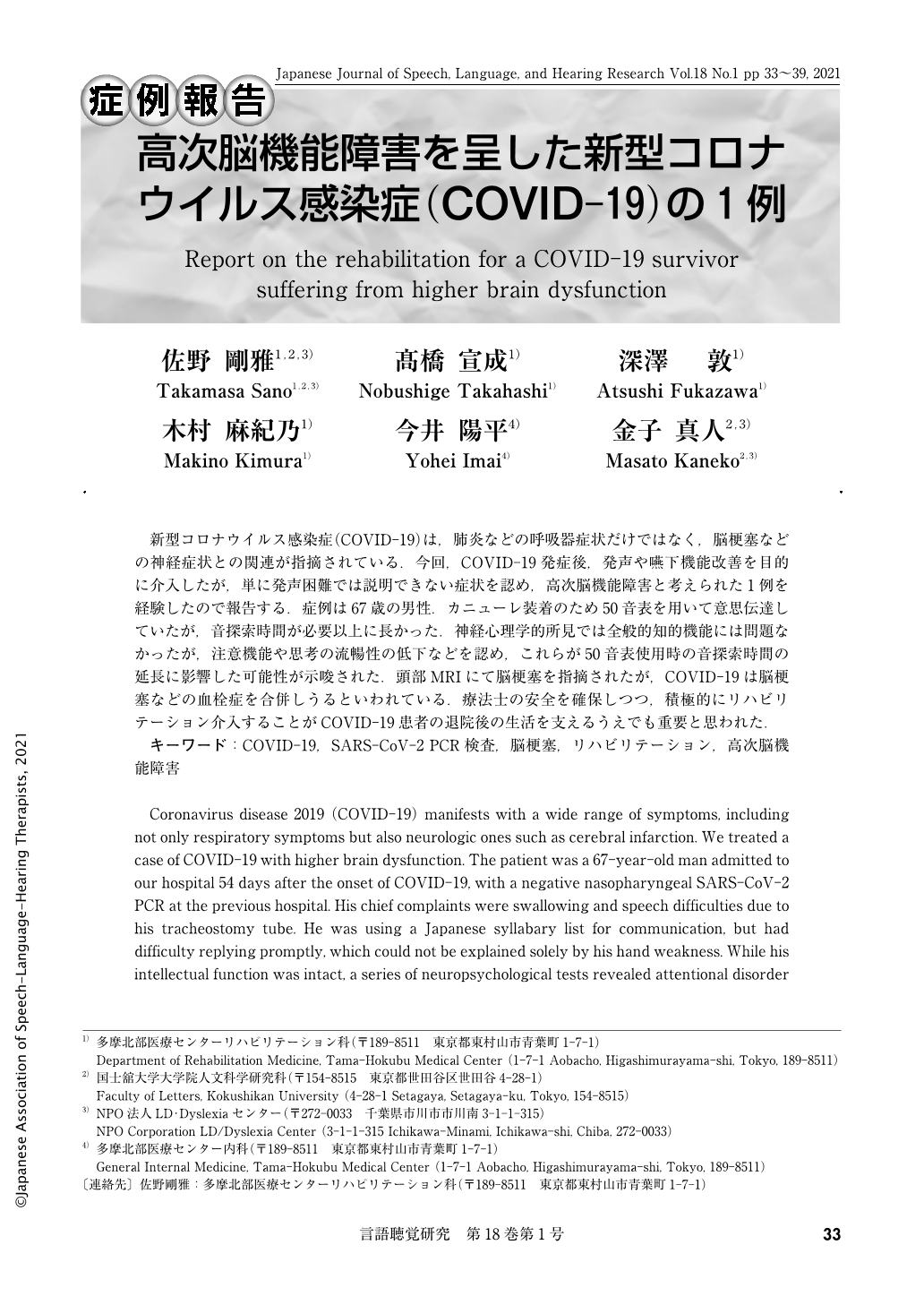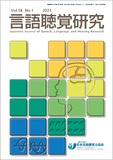Japanese
English
- 有料閲覧
- Abstract 文献概要
- 1ページ目 Look Inside
- 参考文献 Reference
新型コロナウイルス感染症(COVID-19)は,肺炎などの呼吸器症状だけではなく,脳梗塞などの神経症状との関連が指摘されている.今回,COVID-19発症後,発声や嚥下機能改善を目的に介入したが,単に発声困難では説明できない症状を認め,高次脳機能障害と考えられた1例を経験したので報告する.症例は67歳の男性.カニューレ装着のため50音表を用いて意思伝達していたが,音探索時間が必要以上に長かった.神経心理学的所見では全般的知的機能には問題なかったが,注意機能や思考の流暢性の低下などを認め,これらが50音表使用時の音探索時間の延長に影響した可能性が示唆された.頭部MRIにて脳梗塞を指摘されたが,COVID-19は脳梗塞などの血栓症を合併しうるといわれている.療法士の安全を確保しつつ,積極的にリハビリテーション介入することがCOVID-19患者の退院後の生活を支えるうえでも重要と思われた.
Coronavirus disease 2019 (COVID-19) manifests with a wide range of symptoms, including not only respiratory symptoms but also neurologic ones such as cerebral infarction. We treated a case of COVID-19 with higher brain dysfunction. The patient was a 67-year-old man admitted to our hospital 54 days after the onset of COVID-19, with a negative nasopharyngeal SARS-CoV-2 PCR at the previous hospital. His chief complaints were swallowing and speech difficulties due to his tracheostomy tube. He was using a Japanese syllabary list for communication, but had difficulty replying promptly, which could not be explained solely by his hand weakness. While his intellectual function was intact, a series of neuropsychological tests revealed attentional disorder and/or verbal fluency deficits. These symptoms caused his prolonged response times for communication using the Japanese syllabary list. His mental dysfunctions were neuropsychiatric sequelae of COVID-19. We suggest that, while taking highest-level safety measures, aggressive intervention by therapists is essential to supporting the daily living of COVID-19 survivors.

Copyright © 2021, Japanese Association of Speech-Language-Hearing Therapists. All rights reserved.


